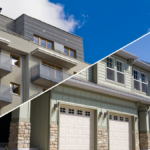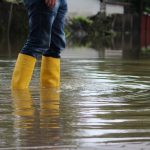Most mortgage companies require homeowners insurance before issuing a loan. But, even if it wasn’t required, having a policy offers precious peace of mind for homeowners and their families.
While homeowners insurance coverage provides a wide range of valuable protections, it doesn’t cover every contingency. Understanding what basic policies do and do not cover can prevent unwelcome surprises in the aftermath of a disaster.
Below we will go into what is and isn’t covered by your insurance, deductibles, and levels of coverage.
What does homeowners insurance cover?
Homeowners Insurance Covers your Property
A standard homeowners insurance plan protects the physical structures on your property against damage from common disasters. Covered structures typically include houses, garages, sheds, other outbuildings, and fences. Covered disasters include fires, hurricanes, and storms.
For the most part, any damage to the structures on your property suffered from a qualifying disaster will be covered up to the maximum limit of your policy. This includes fixtures, HVAC systems, and the actual structure, such as walls, floors, foundations, and roofing.
Standard policies also cover personal belongings located inside the structures on your property. This includes:
- Furniture
- Decor
- Personal items
- Guests’ personal items
Most policies set maximum coverage limits by category, but everything in your home is covered up to those limits.
Homeowners Insurance Covers You
Homeowners’ insurance also covers you and your property even when you are not home. This means it will cover the cost of replacing personal belongings stolen from your vehicles or while you’re on vacation.
It also covers your legal liability and claim-related costs in a range of situations, such as:
- Temporary living expenses if you are forced out of your home as the result of a covered disaster
- Medical and legal expenses if someone is injured on your property
- Medical expenses if you, a family member, or a pet injure another person off-property
- Personal liability in the event that you, a family member, or a pet causes damage to another person’s property
What does homeowners’ insurance NOT cover?
Home Insurance Doesn’t Cover All Natural Disasters
In May 2020, two dams gave way in Midland County Michigan. As a result, raging floodwaters filled homes with four to six feet of water, damaging heirlooms, HVAC systems, walls, and floors. In the aftermath, hundreds of homeowners were devastated to discover that they would get no insurance money to rebuild because flooding is not included in coverage with homeowners insurance policies.
Floods are not the only disasters excluded from standard policies. Other examples of disasters not usually covered include:
- Earthquakes
- Landslides
- Sinkholes
- Volcanoes
Separate policies or riders are available to provide coverage for these events, and homeowners at risk for such catastrophes would be wise to purchase the additional coverage.
Intentional Damage, Neglect, and Extenuating Circumstances are not covered
Homeowners’ insurance also does not cover damage you intentionally inflict on your home. Nor will it cover damage that results from neglect or improper maintenance.
So, for example, if a storm blows shingles off your roof and causes a leak, your insurance would cover it because it is the result of a qualifying disaster. If your roof develops a leak later on because you let debris build up in your gutters or because you didn’t make repairs after previous storm damage, your insurance will not cover it.
Some additional circumstances that aren’t covered either are:
- Certain dog breeds – Some dog breeds or dogs with a history of biting might be excluded from standard liability coverage. The primary offenders, according to most insurance policies, are Doberman Pinschers, Pit Bulls, and Rottweilers. This is something to check on when signing a new policy.
- Pest infestations – Damage caused by rodents, termites, insects, and other animals usually isn’t covered. Remember, insurance generally covers unforeseen and sudden risks, so something like termite damage wouldn’t qualify.
- Mold – The root cause of the mold problem will determine whether or not the homeowner’s insurance policy will cover it. If flooding, poor maintenance, or long-term leaking created the mold, you probably won’t be covered. Refer back to the section on damage from neglect. Sudden problems, however, like a burst pipe, might be covered if you contact the carrier immediately.
- Power surges or outages – Damage or outages caused by something that originates off your property, like maintenance done by your utility company, likely won’t be covered. However, if the cause of the power surge or outage is on your property like your home getting struck by lightning, you likely will be covered.
- Nuclear Hazards – Homeowners’ policies exclude radiation, radioactive contamination, and nuclear reactions. Nuclear power plants are responsible for paying for all damage in the unlikely event of nuclear accidents.
- Acts of war – Damage caused by any type of war won’t be covered. “War” includes declared war, undeclared war, civil war, nuclear war, and insurrections. This is one of those situations where insurance coverage may be the least of your problems, but it’s good to know.
- Government Action – Government action can include having your property claimed by the government for eminent domain or when a government entity damages your home and/or belongings.
- Home-based business operation – If you run a business from your home, like a daycare or your home-share, your homeowner’s policy won’t cover mishaps resulting from the business. You’ll have to look into purchasing a separate business insurance policy to get coverage. These days, with hybrid work schedules, it’s important to recognize the difference between doing business at home and operating a business at home. Most of us fall into the former category, without an increased risk of a mishap. It’s important to understand the difference when purchasing homeowners insurance.
- Ordinary or law exclusions – If you have to rebuild your property after damage and use more expensive materials to bring it up to code, you likely won’t be covered. Your homeowner’s policy will only cover the cost of repairing the old materials. Look into Building Code coverage to address this concern.
Pricy Items May Not Be Fully Covered
Most insurance plans limit coverage by category. This means that they cap reimbursements at a certain amount. Homeowners with many possessions in the same category or very expensive individual items may find that their policy’s cap does not cover their losses in the event of theft or a disaster. This commonly affects:
- Jewelry
- Musical instruments
- Firearms
- Art
- Collections
To achieve the best homeowners insurance coverage for their needs, many policyholders need to:
- Have specialty or expensive items appraised
- Document the value of such items
- Purchase insurance riders specific to that value as an add-on to their standard policies
When in doubt, it’s best to document your belongings and their values and compare them to your policy to verify you have enough coverage.
Deductibles
Another key factor in what homeowners’ insurance will or will not cover is your deductible. A deductible is money that you need to put toward damages before your insurance policy kicks in. High-deductible plans usually have lower premiums than low-deductible plans.
Generally, deductibles work on an annual basis. If you have already put money towards anything your insurance would cover this year, those funds count toward your deductible. Once you reach your deductible, your insurance kicks in.
So, if you already paid your deductible on something else, your insurance might cover your whole loss. If you have not yet paid your deductible, you would need to pay that amount out of pocket before your insurance will pay anything at all.
Actual Cash Value vs. Replacement Cost Value
Finally, it is important to consider whether you have an actual cash value policy or a replacement cost value policy.
With an actual cash value policy, your insurance payout will be based on the value of an item at the time of its loss. So, for instance, if your couch was $1,000 brand new but had depreciated to around $600 in value when it was destroyed in a house fire, your insurer would give you $600 for it.
With a replacement cost policy, your insurer will pay you what it costs to replace your lost item with a new item of the same quality. So using the same couch example, you would receive $1,000 instead of $600.
Replacement cost policies understandably cost more than actual value policies because they pay out more in the event of a claim. That said, they can be invaluable if you need to rebuild portions of your home after a catastrophe.
Fortunately, many policies allow homeowners to split the difference. For instance, they might be able to choose actual cash value for personal belongings but replacement value for structural components of a home and fixtures. Or they may be able to build pricing “cushions” into their policies to cover unexpected expenses and contingencies. Learn more about Actual Cash Value vs Replacement Cost Value.









